Gear Guide: For EMA, Guitar is Just the Beginning…
When it comes to playing guitar, Erika M. Anderson, aka EMA, makes no bones about flipping the usual expectations on their head. “My goal and my style of playing was never about precision,” she says.
“It’s kind of a physical thing, like the guitar is an extension of your body. For me it is so important to like desecrate this instrument of, you know, the male rock star where you have people doing these solos and making these faces like they are guitar gods or whatever. And I’m taking the guitar, and I’m banging on it, and I’m not playing a note—I’m only playing feedback. And it’s better and more exciting to me at the time.”
Guitar or otherwise, the Portland-based songwriter has never shied from the boundaries of music. Originally from South Dakota, Anderson relocated to California where she got her start with experimental outfit Amps for Christ and drony, indie-folk group Gowns, before going solo as EMA in 2010. In the years since, she’s developed into one of the most distinct songwriters of a generation, blending elements of noisy, distorted rock, pop melody, electronic, industrial, and everything in between in her compositions, with lyrics that explore dark subject matter or life on the margins of society.
Released in August, 2017, EMA’s moody, evocative third album Exile in the Outer Ring was written before the 2016 presidential election, but its themes of alienation, and political and interpersonal strife resonate as if Anderson had a crystal ball by her side in the studio that let her look into turbulent times since. Though has an epic, cinematic quality, in both its sounds and storytelling, Anderson’s gear budget was hardly that a Hollywood blockbuster—and she wouldn’t have it any other way.
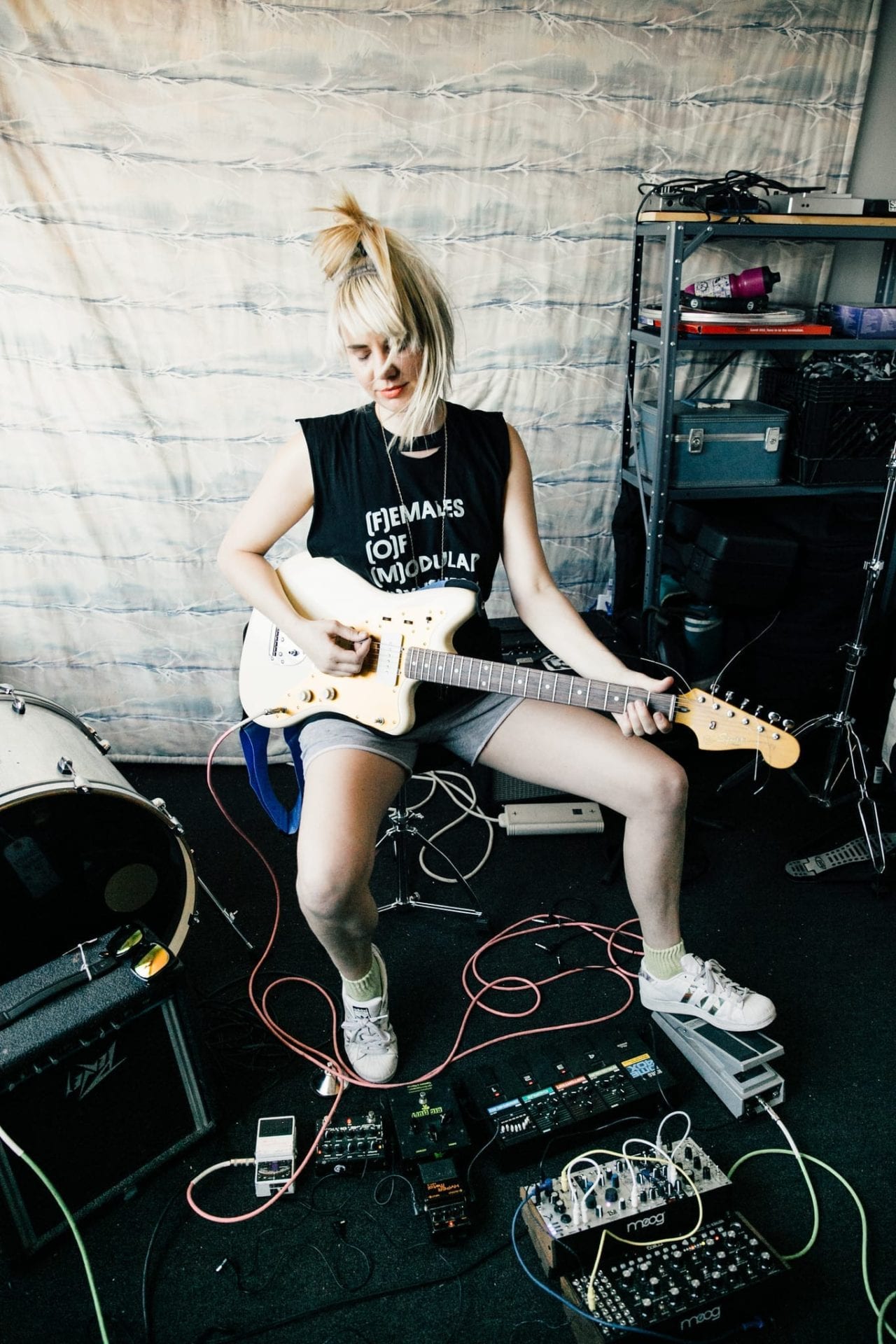
“To be honest, in the past I have not necessarily treated my things well,” she says. “What I doing—especially when I was in Gowns—is rough on my guitars. I’d slam my fist in the guitar to change that feedback tone, or jam my headstock into the ground in order to change the tonality or slam on the on the strings. In the early days of EMA I had a lot of like destructive energy. I’d accidentally spill something all over my pedals or drag them halfway across the stage, and I never had a pedalboard so I just threw them in a box. So I was not nice to any of my physical things and so I was bad at buying expensive things because I’m convinced I’m just going to break them.”
That predilection for going hard on her gear is arguably of the same spirit that inspires Anderson taking risks in her music. Recently, Anderson took us through some of her favorite gear, that along with guitar, includes synthesizers, electronics, and digital audio software.
Exile in the Outer Ring is out now on City Slang.
Squier J. Mascis Jazzmaster
When I was really young I was like into Babes in Toyland. I wanted to get a Rickenbacker but they were really expensive. So the first thing I had was a red Squier Stratocaster which sounded terrible, and then I got a Japanese-made Sunburst Fender Jaguar. That was my main guitar for a long time, but when I was going on tour I got a Mustang. I guess I’ve just basically been a Fender type of person. And now I’m playing the J Mascis Jazzmaster. I’m a sucker, I liked the color, it’s in my price range, and I figured I could make it sound as good as a real Fender if I switched out the pickup.
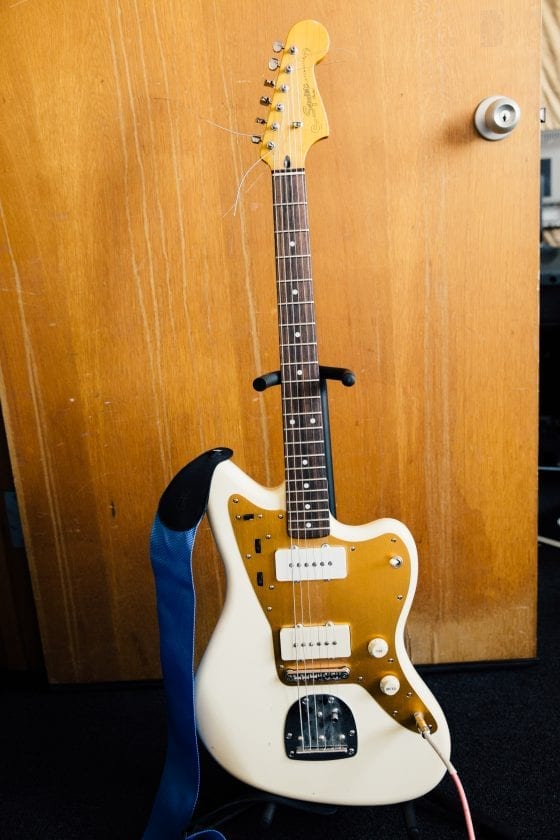
Ableton
I used to work in ProTools, but then when I was working on this horror movie soundtrack I switched over to Ableton because you don’t need an extra piece of hardware so you can just work on it on the road. I feel really strongly that women should understand effects and how to work a DAW [digital audio station] or some sort of recording thing, because then if you go into a studio—even with someone else recording you—you can have really good feedback for them. With Ableton, you can combine a regular analog guitar with soft synths—like software instruments, basically.
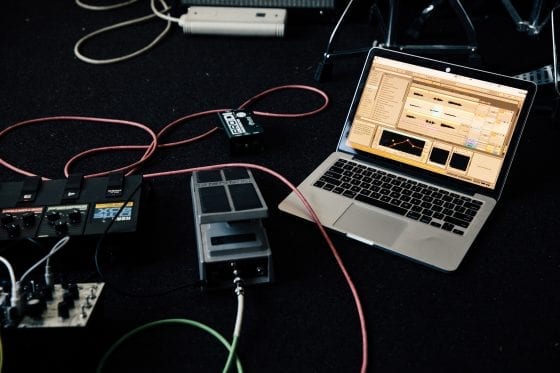
Moog Mother and various modular synths
I’m bringing the Moog Mother on tour, along with a few modules. Modular synths are cool, but sometimes they can be super expensive, especially if you get a lot of them. So I have a very small rack. They seem confusing and they are, but if you understand a guitar pedal chain, that’s going to help you understand a modular synth, but instead of worrying about the order [of your pedal chain], you can put them in any order you want and play around with it.
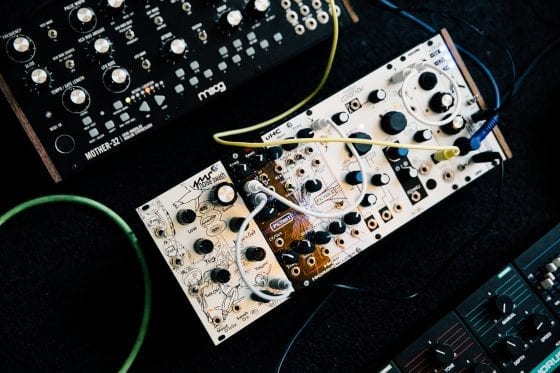
BOSS HM-3 Hyper Metal
It’s like a compressor to mellow out the sound so I know it won’t be too insane. The Hyper Metal is going to keep it under control.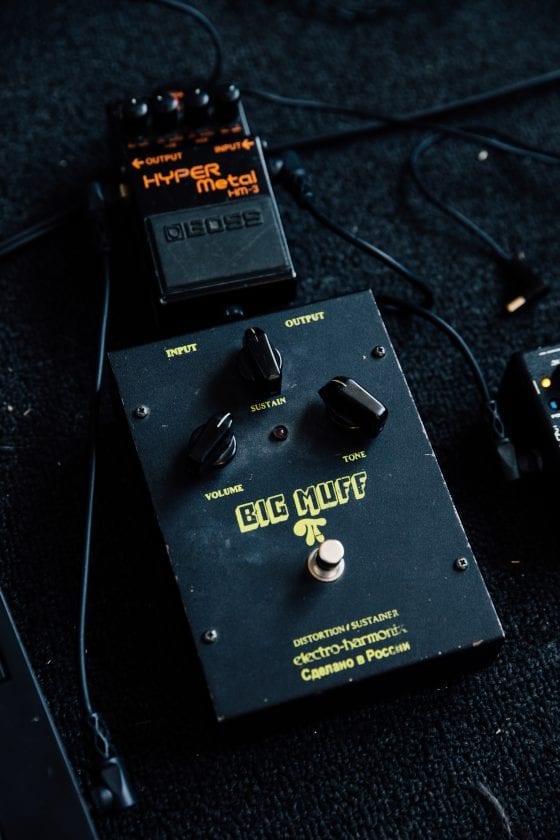
MXR Doubleshot Distortion and Big Muff
A lot of times with my signature sound kind of was this Doubleshot Distortion by MXR on the top setting. There’s two different spots on it—which I heard is the same circuit as like what Dimebag Darrell used or something. I’d run that into a run into like Russian made big muff, and then into just like a Blues Junior with maybe a tuner or a Loop Station in between. With that I can get a really beautiful feedback tone that’s not very harsh. But I can kind of paint with it. I can I can take whatever else is coming out of the speakers and I can get my feedback in tune with that I can move and if it hits another note that’s like harmonically pleasing chord.
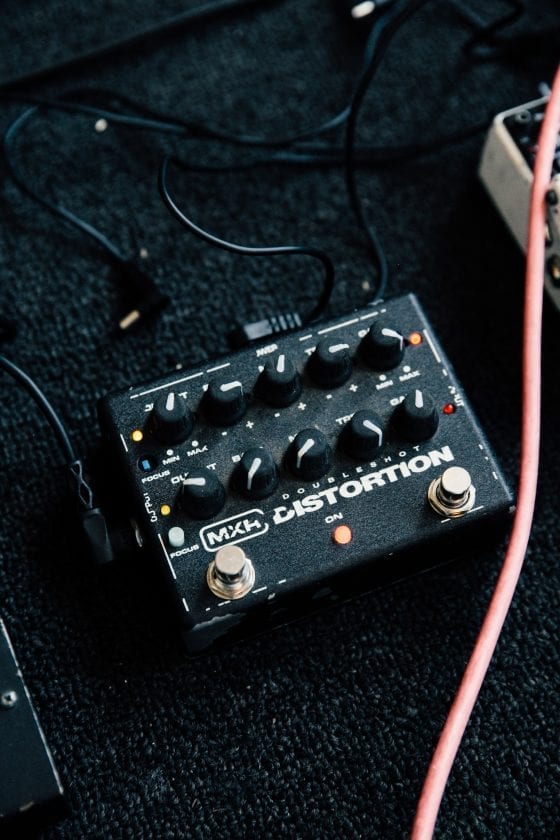
Peavey Amp
I don’t want a big amp, I’m not going to lie. Playing with a half stack is rad. It’s fun; I don’t want to carry it from night to night, and from venue to venue. I don’t need that. So I play with small and amp that I just recently got that I love; a $35 Peavey amp, a solid state with a super saturator on it that sounds incredible. I love the way that sounds, and it’s tiny.
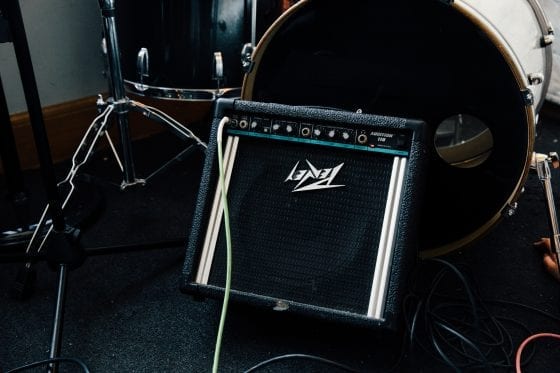
Korg PME40X
I barely want to share this special secret. It was made in the 80s, between 82-84, or something like that. It’s basically a built-in pedalboard, and you can take these little modules in and out. You can have distortion, EQ, a phaser, a chorus—all this different stuff. I’ve used it for one show so far. I’m trying to see if it can be my pedalboard, so that all of my other stuff can stay at home. I just can’t do all of [those effects]. Good distortion is important to me, so I’m hope that this distortion module will be enough. I want to simplify what I’m doing with my guitar because I’m bringing the modular synth rig with me.
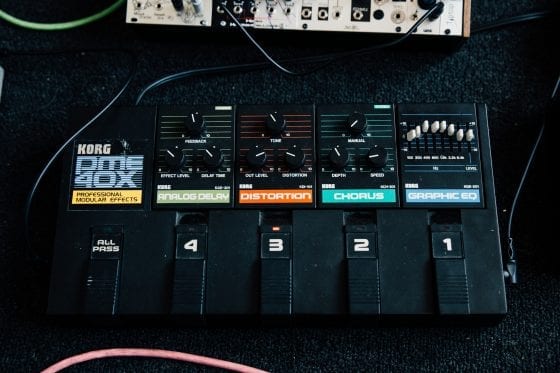

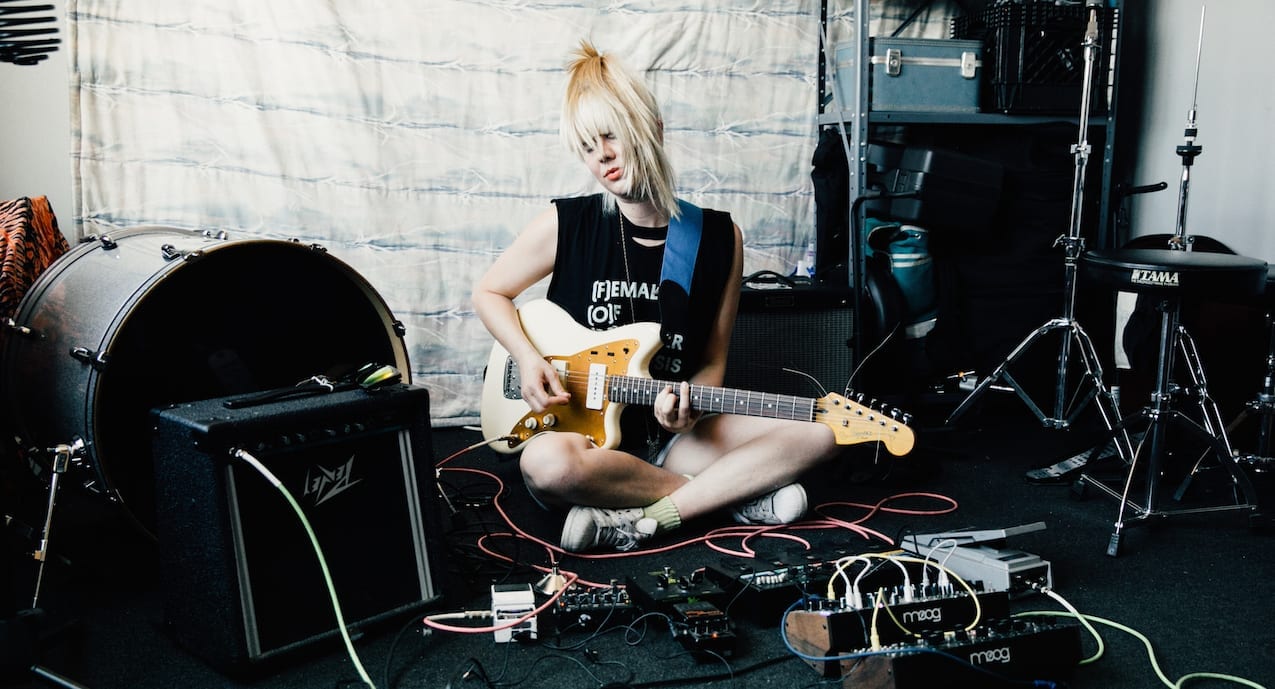


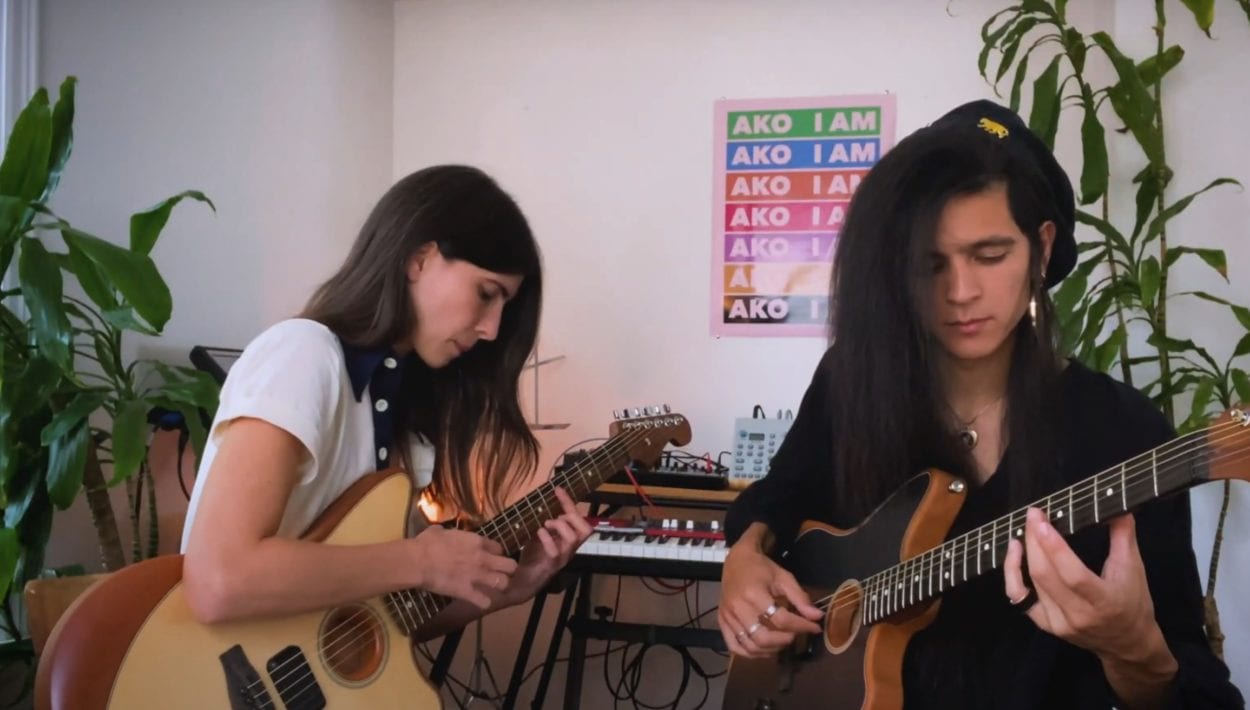

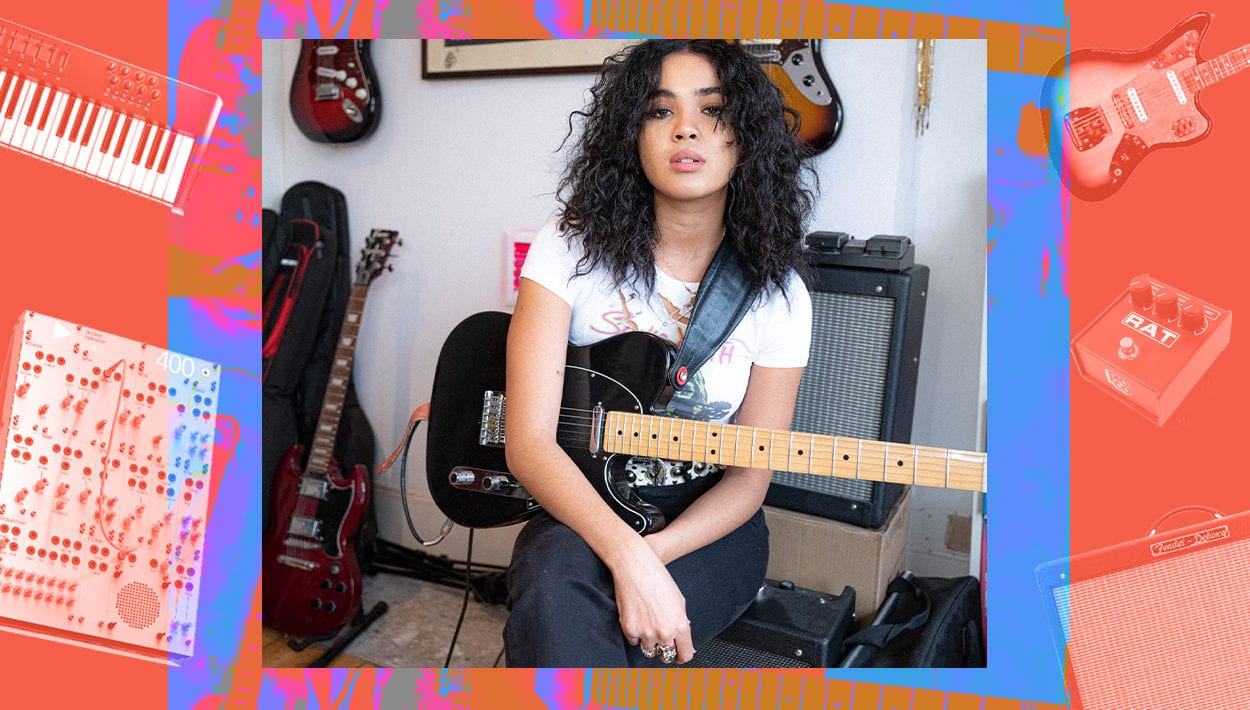
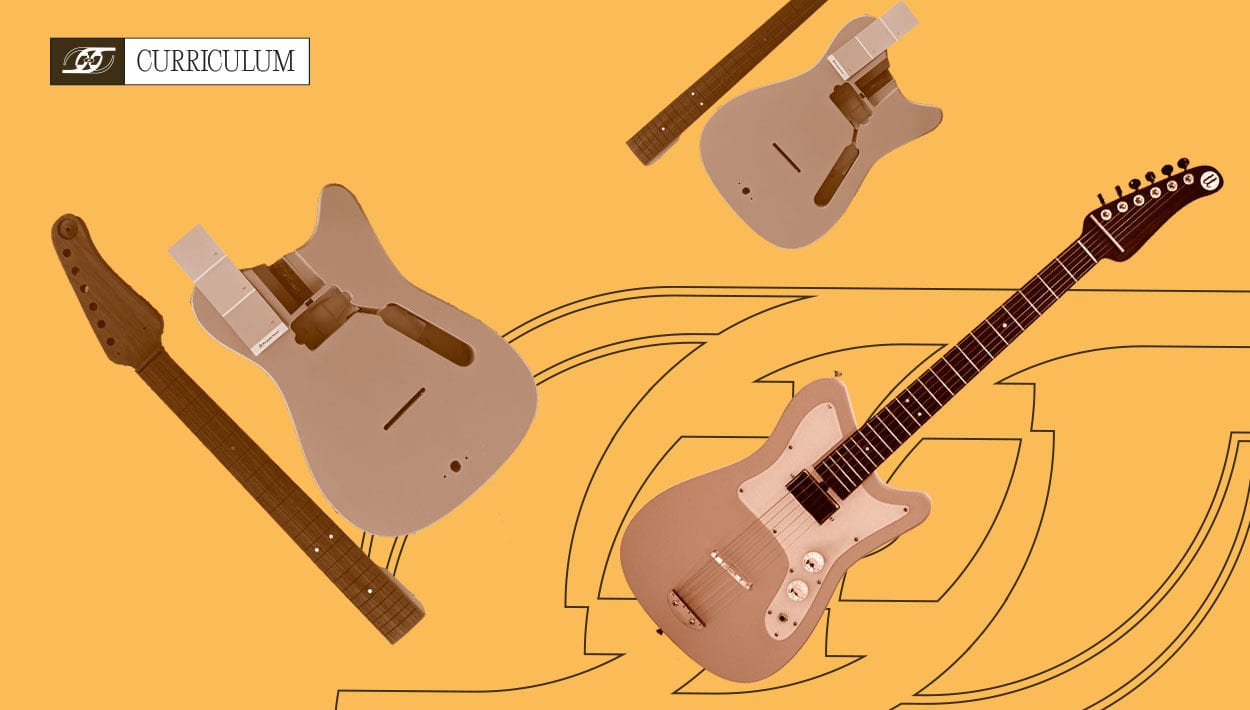
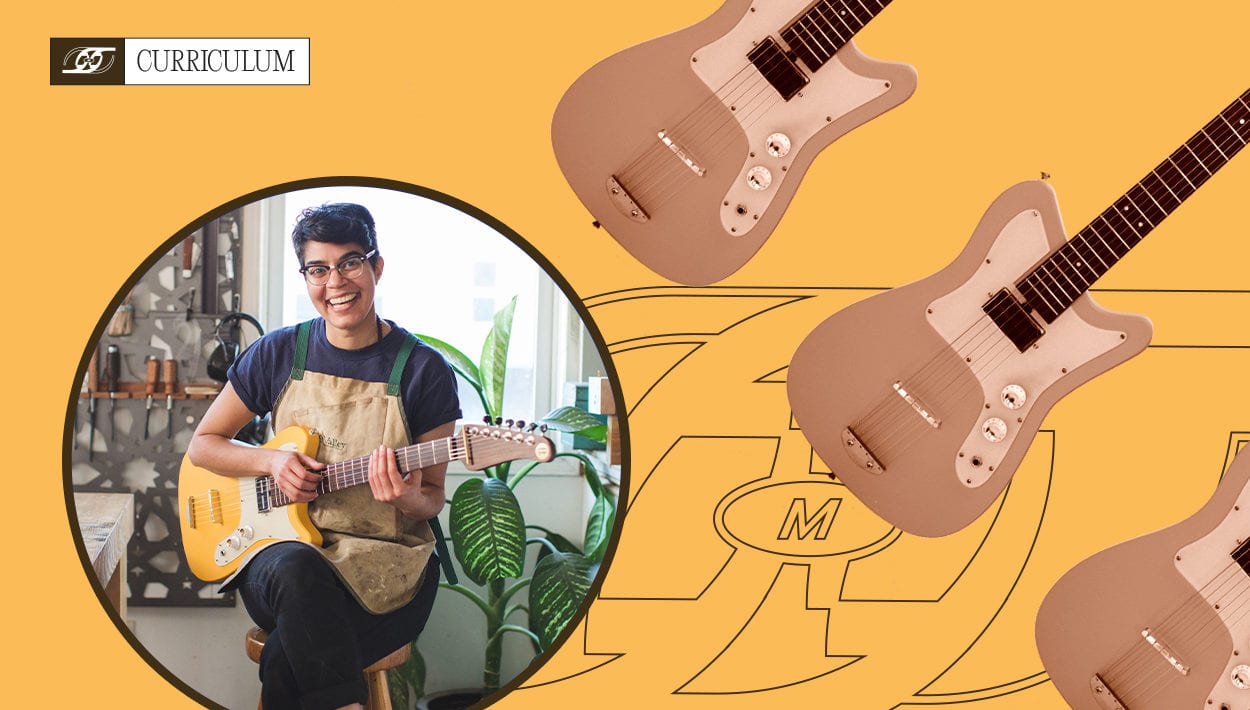
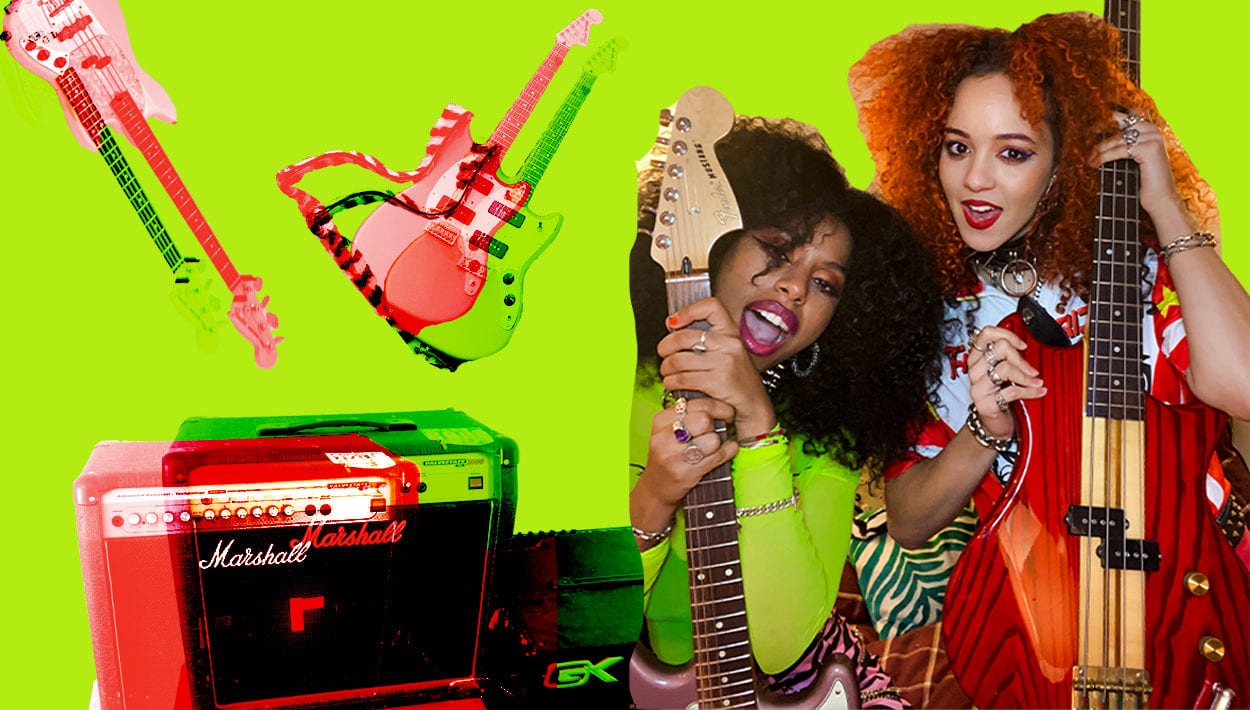
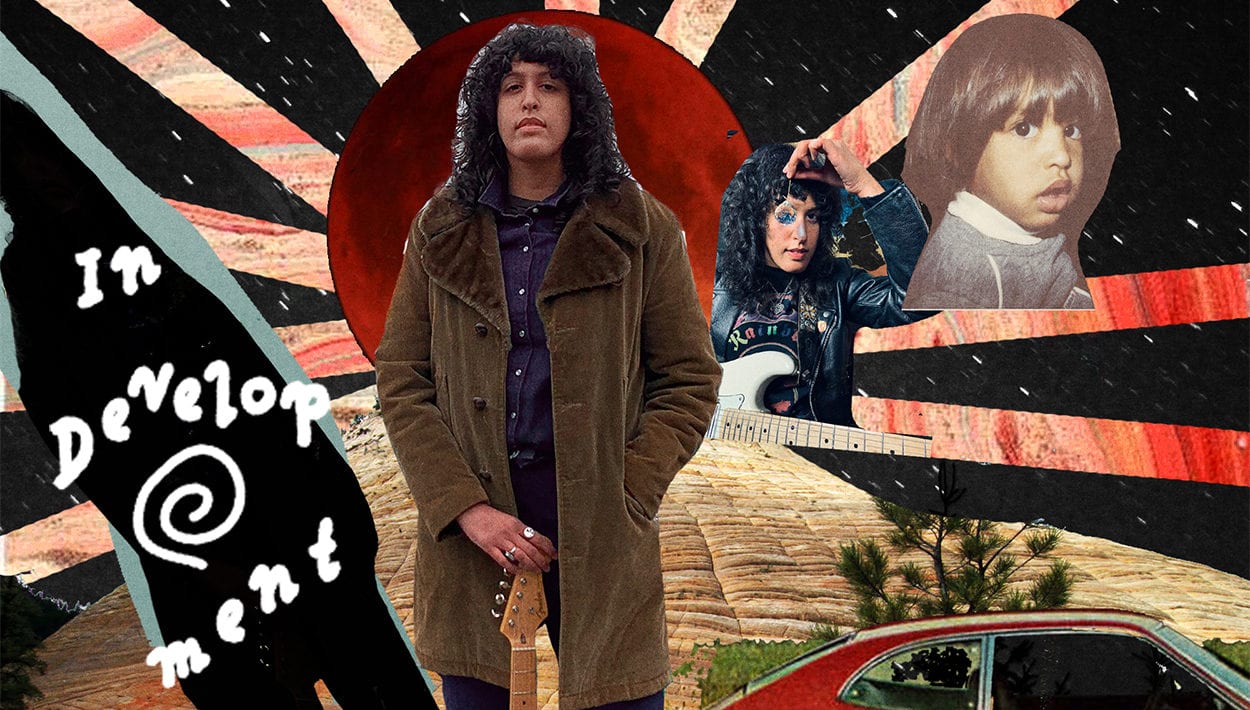
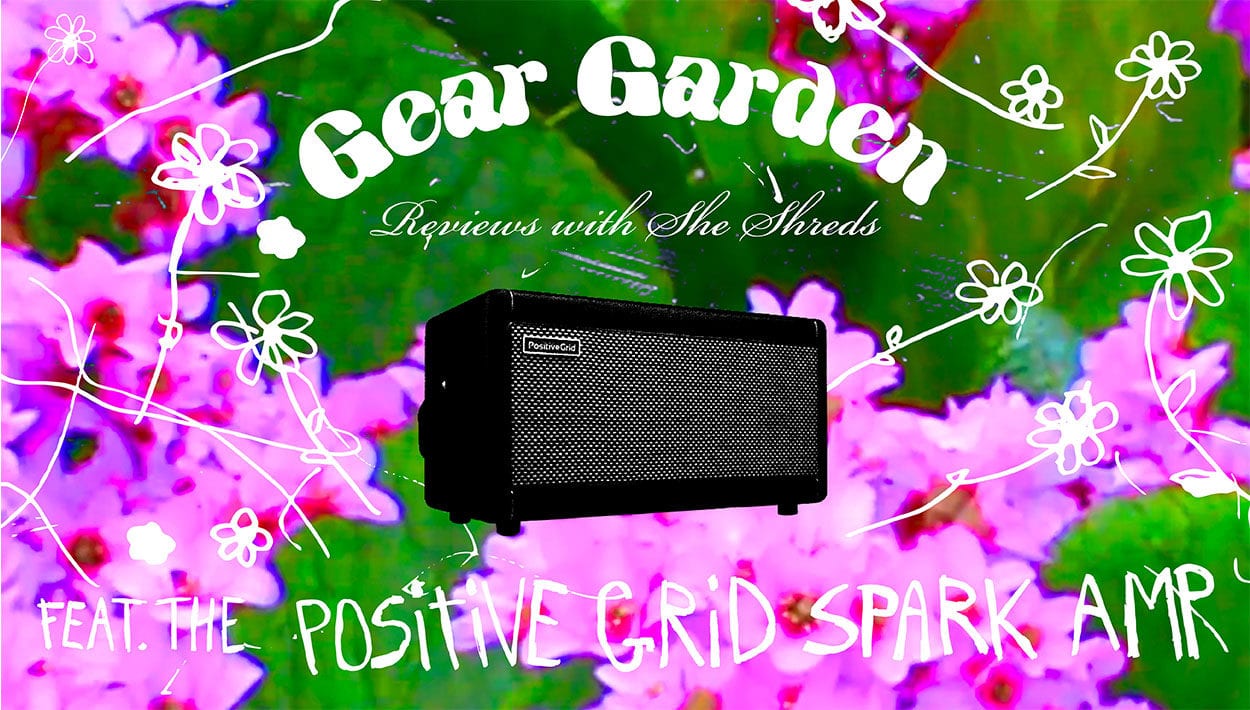
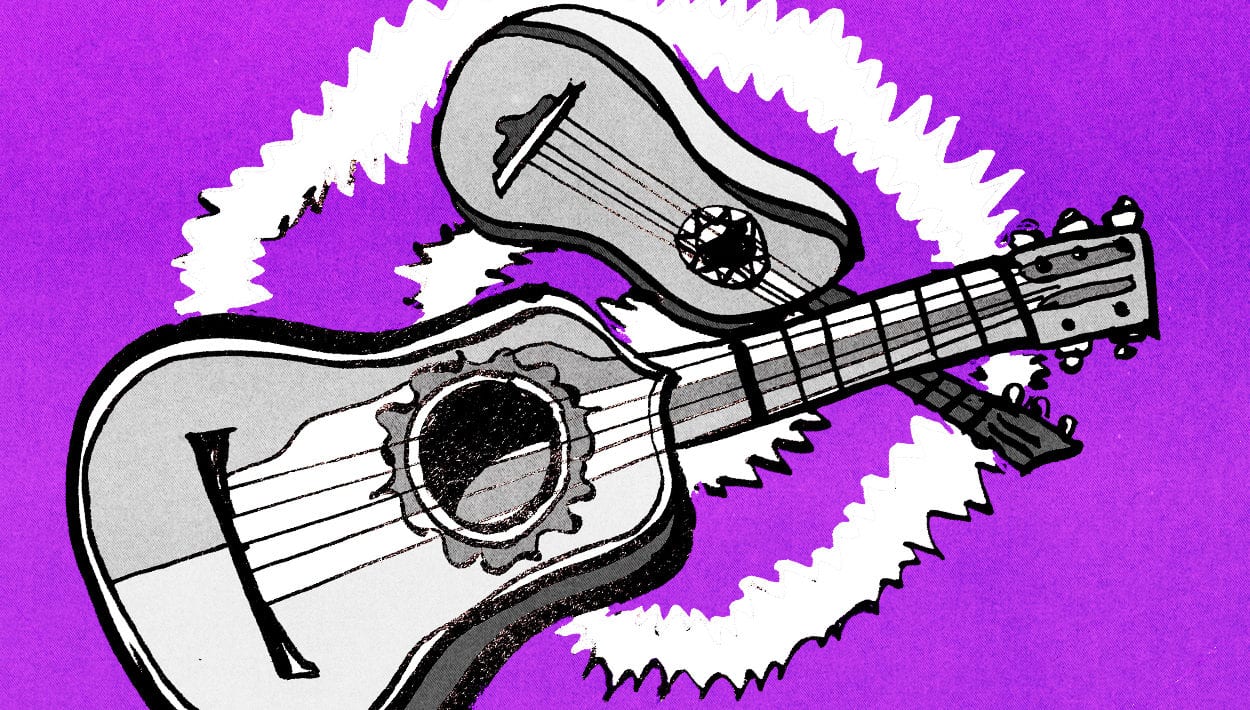


Comments
[…] sign of slowing down, particularly amongst women/non-binary and LGBTQ players. Erika M. Anderson of EMA, Chelsea Wolfe, Jessica Dobson of Deep Sea Diver, and Nik West are among the many musicians who […]
Pingback by How Fender Offsets Are Helping Shape Music (Again) on December 18, 2017 at 11:49 am[…] This month, Kim Gordon released “Sketch Artist,” the second teaser off her upcoming solo album, No Home Record. After four decades of hearing Gordon through a wall of detuned guitars and drums in Sonic Youth, Free Kitten, and Body/Head, the sound of arrhythmic industrial beats and airtight production are a thrilling surprise, almost reminiscent of EMA. […]
Pingback by She Shreds Media on April 26, 2021 at 4:20 pm